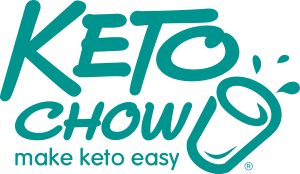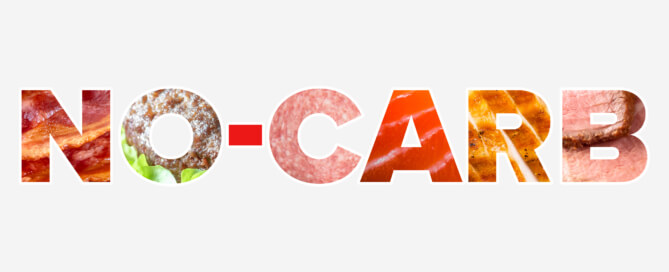What is the no carb diet?
A no carb diet is a way of eating that focuses on excluding all carbohydrates from the diet. It is also known as a zero carb diet or carnivore diet. Almost all foods contain some level of carbohydrates, but a no carb diet restricts the foods consumed to only those that have trace carbohydrates or less than 1 gram per serving.
Like a ketogenic diet, the zero carb diet rules out foods like breads, pastas, grains, starchy vegetables, and most fruits. However, these diets go a step further and remove more foods like nuts, seeds, dairy products, and non-starchy fruits and vegetables.
There are different ways to eat a no carb diet; one of the more popular trends is the carnivore approach which limits the diet to animal foods like beef, pork, and fatty fish. Some dieters may choose to include diet beverages and non-carbohydrate sweeteners like erythritol. Some no-carb diets include very low-carb green vegetables like lettuce, kale, and celery since they are made up mostly of water and fiber.
A no carb diet can become extremely restrictive, so practitioners need to take extra care to get the widest array of nutrients possible in their diet. If you are considering this way of eating, be sure to educate yourself by doing your own research, and consult with a trusted medical practitioner before undertaking a diet of this nature. If you do decide to try a zero carb diet, I recommend eating a wide variety of foods to ensure the best nutrition. For instance, a carnivore diet should include a large variety of meats, organ meats, fatty fish, and eggs as opposed to relying on one or two proteins for all the necessary nutrients.
So, what can you eat on a no carb diet? Here is a list of some common and not so common foods that can be enjoyed. (Remember, these are all great options for keto-ers, too!)
- Meat: beef, pork, lamb, venison, bison, small game, and wild meats. Any natural meat should be appropriate for a no-carb diet. Be mindful that preserved meats like bacon, jerky, and canned meats can contain sugars and starches, so always read labels carefully.
- Organ meats: kidneys, gizzards, liver. Also known as variety meats or offal, these foods are rich in nutrients and are a nourishing addition to any diet.
- Poultry and eggs: chicken, turkey, duck, squab, pheasant, goose. There are many kinds of domestic and game birds to choose from. Chicken eggs, quail eggs, turkey eggs, and goose eggs are all good choices. Look for local farmers that may offer a variety of eggs in the spring when most birds are laying.
- Fish: cod, salmon, catfish, tuna, mackerel, trout, tilapia, eel, sardines, anchovies, and more. If it has gills and scales, it’s fair game. Small amounts of shellfish may work as well, but shellfish like clams, shrimp, and calamari have a higher natural carbohydrate content than fin fish so be sure to investigate before you partake. Canned fish can be a great, nutritious, convenient option, too, but read the labels as always to check for added sugars, starches, and unwanted preservatives.
- Fats: clarified butter, coconut oil, extra virgin olive oil, lard, beef tallow, beef suet, chicken fat, goose fat, and avocado oil are all carb-free and healthy fat options. This is the one category of foods that can be 100% free of carbs.
- Beverages: water is always the most important beverage to choose, but black coffee, green tea, mineral water, carbonated water, broths, and stocks are good options too. You may also choose to add some zero carbohydrate beverages like diet sodas, sweetened iced tea, and flavored drops to your rotation.
- Condiments: mayonnaise, mustards, vinegars, herbs, and spices can all be included in a no-carb diet but pay attention to ingredients to look for added sugars, flours, and starches. Choose products made with the best ingredients possible or make your own.
- Dairy: aged cheeses, heavy cream, butter, and high protein yogurts can be included in small amounts. All dairy does contain some carbohydrates so do your research and plan to include these in small amounts.
- Green vegetables: cucumbers, lettuce, leafy greens like kale and collards, celery, and summer squash are all high in fiber and water, and low in carbs. Avocado is very high in good fat, and low enough in carbohydrates to be included in this list too. Traditionally fermented vegetables like sauerkraut and kimchi can also be excellent additions to the diet and help to encourage good gut health. There are many options available now, but it does take diligence to ensure they don’t include unwanted ingredients. You can also learn to make your own ferments at home with fresh vegetables.
This is by no means an exhaustive list of the foods that may be eaten on a no carb diet, but it can help get you started! When attempting a diet that restricts a large number of foods, it is important to include as many nutrient dense, high-quality foods as possible to ensure you are getting all the nutrition you need. I recommend speaking with a nutritionist or other medical professional before undertaking a dietary change of this magnitude.








